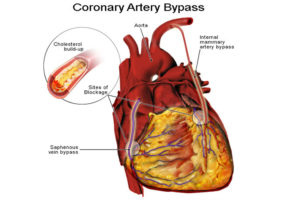
CORONARY BYPASS SURGERY IN YOUNG ADULTS (UNDER THE AGE OF 40 YEARS)
- drpavankumar
- 0
- on Dec 05, 2016

This week,I had two such patients under the age of 40 who were operated for Coronary Bypass Surgery at Lilavati Hospital.
- Patient Mr B. Age 38 yrs had severe ostial leftmain stem disease and proximal LAD lesion. In view of recent international studies PTCA to left main stem disease was advised.Due to short course of left main and ostial involvement, there were different view points put forward to the patient keeping in mind safety factors and risk of stent thrombosis percentage. Patient opted for coronary artery bypass surgery which was conducted in the first week of November successfully with CABG x 2 grafts to left coronary system.
- Patient Mr R. 36 yrs male, coming from the interiors of Maharashtra, had severe triple vessel disease with very strong family history of many coronary bypass surgeries in the family. He had 90% block in LAD, 90% in D1, 90% in D2, 70% in OM2 and total occlusion of distal circumflex artery. He underwent CABG x 5 successfully with all five grafts put into left coronary system. Patient is ready for discharge with smooth recovery.
DISCUSSION- Coronary artery bypass surgery in young adults is a well established procedure with the advent of angioplasty, more and more patients opt for PTCA in this age group of under 40 yrs and they prefer surgery for later years when stents get blocked.
In these two patients who underwent CABG,the first one was a difficult decision, but safety and better long term outcome compared to PTCA to left main, patient opted for coronary bypass surgery.
In the second patient, in multiple coronary artery blocks and 100% CX occlusion setting, CABG in five vessels gives total revascularisation of all diseased vessels as compared to PTCA to two vessels as culprit lesion treatment as was advised by cardiologist to the patient.
CABG is still gold standard for completeness of coronary revascularisation and must be offered to the patient regardless of the patient’s age.


